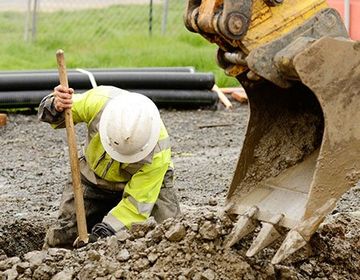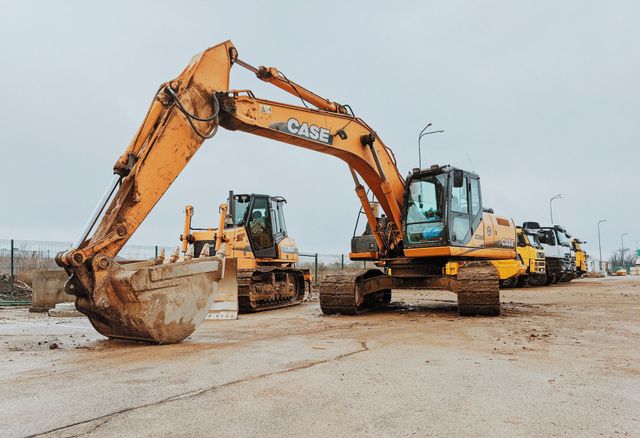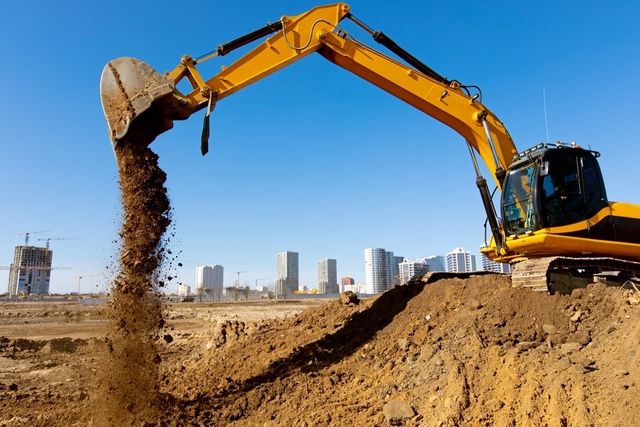Dump Truck Companies in Ohio - Trusted Dump Truck Solutions Throughout Ohio
Dump Truck Companies in Ohio - Trusted Dump Truck Solutions Throughout Ohio
Blog Article
Thorough Exploration: The Science Behind Superior Excavation Practices
From old hand devices to modern-day hydraulic excavators, the evolution of excavation strategies has been a testament to human ingenuity and technological innovations. What really sets premium excavation methods apart is a deep understanding of geological concepts, coupled with the utilization of innovative devices and approaches.
Advancement of Excavation Methods
Throughout background, the development of excavation techniques has played an important role beforehand construction practices and historical discoveries. From the rudimentary devices utilized by our forefathers to the advanced machinery used in modern-day times, the progression of excavation techniques has substantially transformed just how we approach numerous jobs.
In ancient times, manual work with fundamental tools such as pickaxes, wheelbarrows, and shovels was the main approach of excavation. This labor-intensive process restricted the depth and extent of excavations, usually resulting in sluggish development and limited accessibility to particular websites. Nevertheless, as people progressed, so did the techniques and devices made use of for excavation.
The Industrial Change noted a transforming factor in excavation experiment the introduction of steam-powered machinery. This innovation transformed the field, enabling faster and a lot more comprehensive excavations. In modern times, technology plays a critical function in excavation, with developments like GPS systems, drones, and 3D scanning boosting accuracy and effectiveness in the area. The advancement of excavation strategies continues to form the way we build, explore, and understand the world around us.
Role of Innovation in Excavation

The assimilation of sophisticated modern technology has essentially revolutionized the field of excavation, improving accuracy and efficiency to unprecedented degrees - septic ohio. One of the crucial technological innovations that has significantly influenced excavation techniques is the use of GPS systems.
In addition, the development of 3D modeling and simulation software application has structured the preparation process for excavation projects. Drivers and engineers can now visualize the whole excavation procedure prior to damaging ground, enhancing and identifying possible challenges process. In combination with this, the execution of drones in excavation tasks has facilitated aerial studies, volumetric dimensions, and website examinations with unrivaled speed and accuracy.
Geological Concepts in Excavation
An understanding of geological concepts is crucial for guaranteeing the architectural integrity and security of excavation sites. Geological factors play a vital duty in identifying the expediency and safety and security of excavation jobs (lancaster trenching). One essential geological concept to think about is the type of dirt or rock existing at the site. Various dirt types, such as crushed rock, clay, or sand, have differing degrees of security and call for different excavation strategies. Cohesive soils like clay may require added support to stop collapses, while sandy soils may be vulnerable to disintegration throughout excavation.
By performing thorough geological surveys and evaluation, designers and excavators can develop strategies to minimize dangers and make certain the successful conclusion of excavation projects. Ultimately, including geological concepts into excavation practices is crucial for accomplishing secure, my blog efficient, and sustainable results.

Newest Tools for Excavation
In the realm of excavation techniques, contemporary innovations in tools have actually reinvented the effectiveness and accuracy of excavation procedures. These drones can provide detailed airborne surveys of excavation websites, offering real-time data on topography and possible hazards.
One more cutting-edge device gaining appeal is the application of 3D printing technology for creating personalized excavation devices. This permits the manufacturing of specialized tools that are customized to the details needs of a task, increasing efficiency and reducing downtime.
Additionally, advancements in materials scientific research have caused the growth of more powerful and a lot more resilient excavation devices. lancaster trenching. Tungsten carbide-tipped excavator add-ons, for instance, offer superior performance in difficult ground problems, boosting productivity on-site
Scientific research's Effect on Excavation Practices

In addition, clinical research study on dirt auto mechanics and geotechnical engineering has actually provided valuable understandings right into soil behavior, enabling excavation professionals to make enlightened choices relating to excavation techniques and dirt stabilization strategies. Generally, science proceeds to drive innovation and renovation in excavation practices, making excavation jobs extra efficient, cost-efficient, and sustainable.

Conclusion
Finally, the evolution of excavation strategies has been considerably affected by advancements useful link in technology and a deeper understanding of geological concepts. The latest devices and tools made use of in excavation have enhanced performance and precision in the area. The application of clinical understanding has actually significantly improved excavation practices, bring about more sustainable and effective methods for excavating numerous kinds of materials.
In the world of excavation techniques, modern innovations in tools have actually transformed the performance and precision of excavation processes. By leveraging scientific principles, the excavation sector has been able to dramatically enhance performance, accuracy, and safety and security in excavation processes. GPR allows excavation groups to non-invasively check and map subsurface structures, energies, and prospective dangers, allowing them to intend excavation projects with greater accuracy and lowered threat of crashes.
Additionally, clinical study on soil mechanics and geotechnical engineering has offered valuable insights right into dirt habits, allowing excavation professionals to make informed choices regarding excavation approaches and soil stabilization strategies. In general, science continues to drive technology and he said renovation in excavation practices, making excavation jobs more reliable, cost-effective, and sustainable.
Report this page